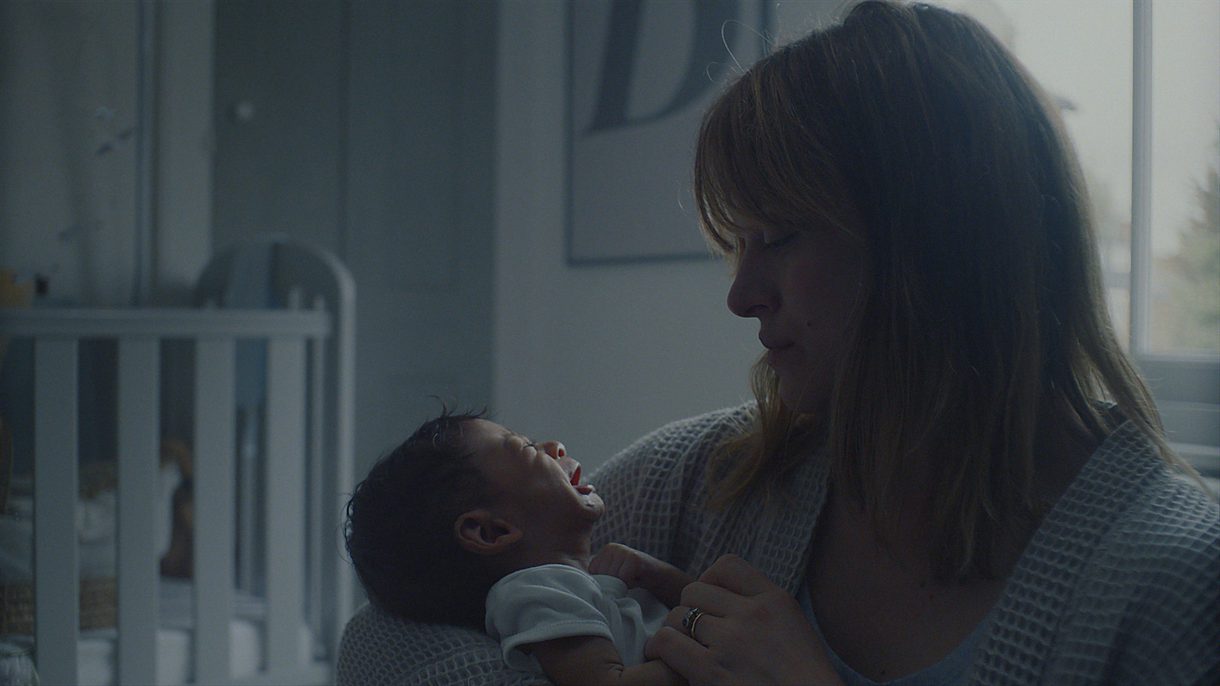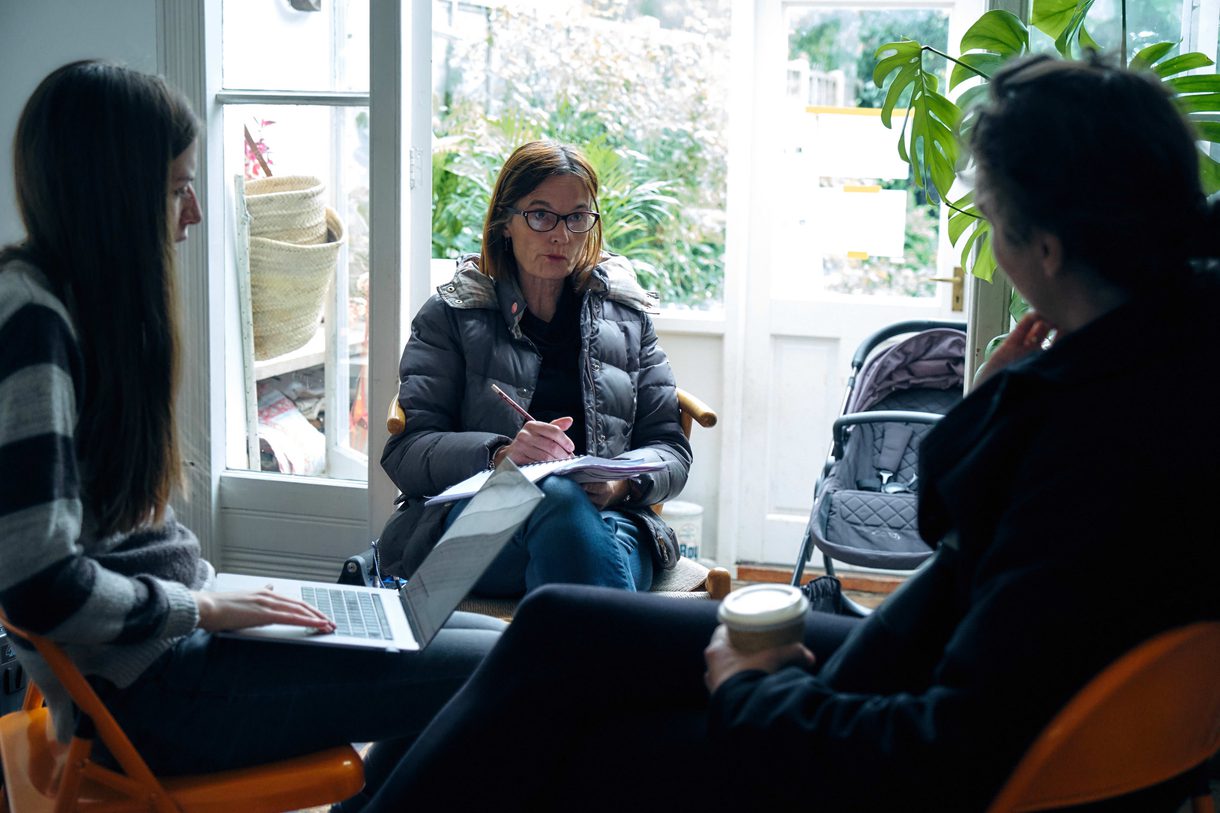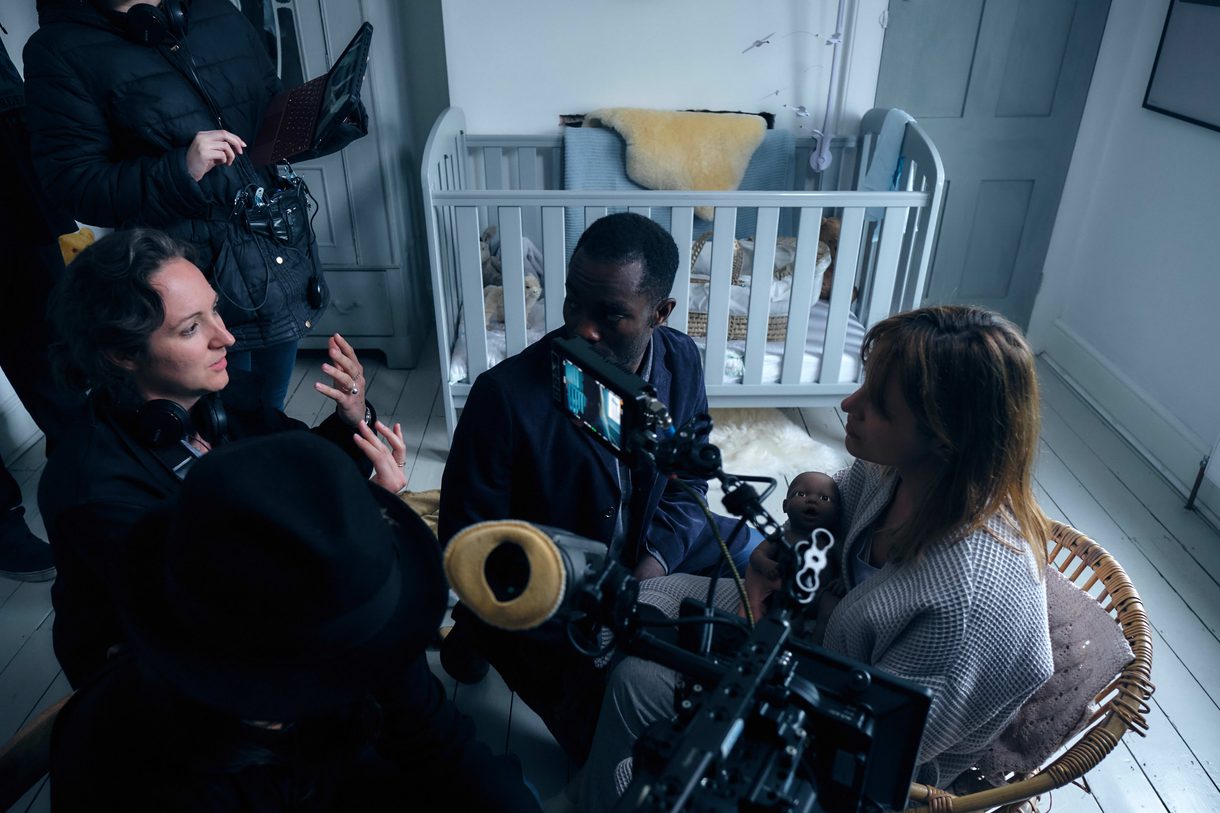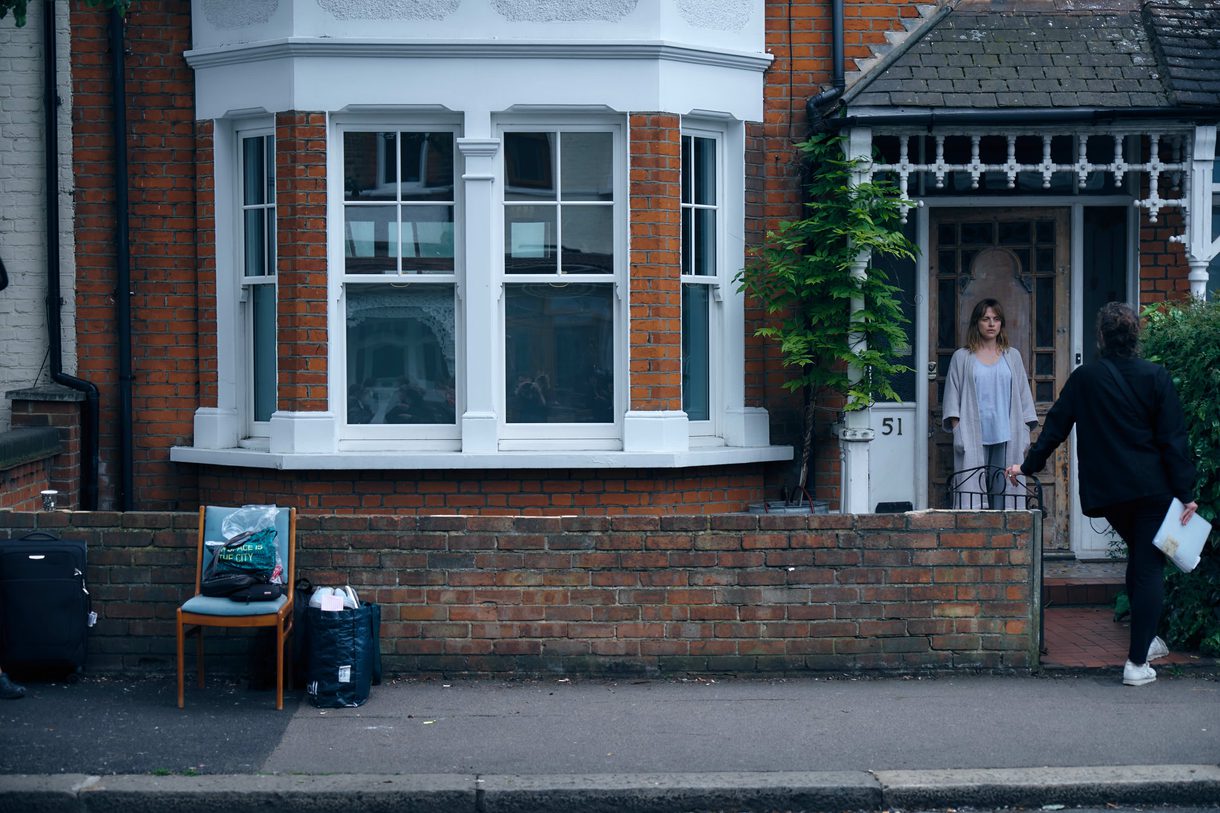News Story

We interviewed the team behind Stand Still, a short commissioned in 2019 that deals with a new mother struggling with Postnatal depression. We caught up with the team to find out more about their creative vision and their filmmaking process.
Follow Stand Still (@standstillfilm_) on Twitter for updates on Stand Still and its distribution. The film is available to watch here.
What was your journey into the industry like?
Isabella Wing-Davey (Director):As with many Directors, I started out as a runner and assistant to producers, directors and actors, learning on set while writing and directing my own projects in my spare time. Then I went to NYU Tisch Graduate Film School in New York for my MFA in Directing and worked in development and production for Philip Seymour Hoffman which taught me a lot, before going freelance again to focus on my own projects full time.
Zoë Tapper (Co-Writer/Actor): I enjoyed the rigour of the BFI Network selection process; it gave us a focus and a timeframe to work towards and a useful backdrop of industry professionals who we could call on. The majority of my career has been spent in front of the camera so it was fascinating to be a part of the decision-making process behind the scenes.
Michelle Bonnard (Co-Writer/Actor): Like most kids, I started acting at school, and when I was 12 I joined the Central Junior Television Workshop in Birmingham, which ran weekly drama workshops. The students were auditioned for various TV shows, so I did a few days on various shows including Bernards Watch and Peak Practice! When I was 19, I went to LAMDA where I studied acting on their three year acting course. A few years out of drama school, frustrated with the lack of decent roles for women, I started writing in earnest, and after two kids here I are…
Sarah Beardsall (Producer): I started out as a casting assistant working with the legendary casting director Michelle Guish on films like Truly Madly Deeply, Four Weddings and A Funeral and lots of high end British TV. I was a casting director for ten years until I decided to step into development and production and set up my own production company.
Tell us more about your BFI NETWORK short?
IWD – “Stand Still” tells the story of Susannah, a local GP who outwardly may seem to have it all together, nice husband, beautiful baby, perfect house, but is struggling with post natal depression. We find her in a moment of crisis, and a chance sighting from Rupa brings them together and might offer her the help she needs.
What was your creative process, how did you get ready to make the film?
IWD – We developed the film from concept stage with the BFI, and had story workshops as well as a directed reading, which were all really helpful in fleshing out the characters and the world and getting valuable feedback from the other filmmakers in the sessions as well. In terms of my creative process, I’ve always found mood boards and visual references incredibly important when building a cinematic language to tell a story, and all my HoDs were incredibly receptive to this and worked really hard to bring it to life. I was specifically referencing Michael Haneke's Caché and Andrey Zvyagintsev's Leviathan and Elena for a staid, often locked off way of looking at character isolation and depression rather than the more traditional shakey handheld camerawork often used for films about mental health issues.
The short draws on mental health, more specifically postnatal depression and its effects which subverts the strong, caring and protective “mother” stereotype often seen in film, where did the inspiration come from?
ZT - Myself and Michelle have both had experience of postnatal depression and have subsequently worked alongside charities who support women suffering in this way (Mum's Aid and One Fit Mama). It was important for us to illustrate that mental health struggles don’t discriminate. We are often fed an image of an ideal motherhood experience that just does not exist and we wanted to explore what happens when that ideal is shattered.
MB - Although we both had PND, Zoe and I reacted quite different to it so it was important we researched fully. Zoe and I talked to our charity partners and read a lot. It was important that we found one experience, which was specific to our character Susanna and wasn't us re-living our own trauma.
Why do you feel stories like this are important and why did you feel like it was important for you as a team to tell this?
IWD - As Zoë mentioned, there is this pervasive idealised version of motherhood that we wanted to challenge, and also that depression has many faces, just because your house is clean doesn’t mean you’re not depressed. This was something that all of us felt very strongly that we wanted to speak to. It’s also important for us to reflect the authentic way that women can judge and also support each other, which we tried to explore in the Rupa/Susannah dynamic.

Can you talk us through one of the scenes/Do you have any favourite moments from the shoot or process?
IWD – Some directors love the prep or live for the edit when it all comes together on the screen, I really enjoy those stages of production, but for me I love the shoot itself.. there’s the adrenalin of working to a schedule (because there’s never enough time on a short!), and when things really gel with a performance, or the light is just perfect to beautifully capture a look or a moment, or a special effect like the vase smashing just ‘works’ on camera (which so often isn’t the case!), these are all favourites.
ZT - The scene that springs immediately to mind is the final scene, when the two women are brought together in a moment of crisis. It is an upsetting and shocking moment. As an audience we are torn between our deep rooted concern for the baby and our anxiety for the distraught mother. The relief when Rupa arrives is palpable but it also comes at considerable cost. It was a beautiful, complex scene to film, not least because we had to work around the sleepy requirements of our adorable baby actor!
MB - I loved that scene too, to hold that baby, whilst being pregnant, and in some way knowing what I was about to go through - to be a mother a second time round - felt pretty extraordinary, and complex!
SB - Filming the scene where Rupa sees Susannah on the bridge while she is driving was really fun. We found the perfect location for the bridge over the A12 and got mates in cars to recreate the traffic. The director, DP and 1st AD rode in the back of Rupa’s van.
IWD – Yup- Being strapped into the back of the van that Michelle was driving for that scene was pretty fun!
What was the most challenging scene to shoot, can you walk us through how you overcame that?
IWD – The final scene of the film was probably the most challenging scene, for many reasons; it’s the climax of the film, so there are a lot of dramatic beats to hit in terms of the performances, which we didn’t want to rush, but we also had logical things to contend with- it was the longest dialogue scene so there was the matter of covering it with the camera, but also we had our tiny baby actor who had to be awake and then fall asleep and stay asleep in the scene, and then we also had a gorgeous location which had a tricky orientation, so we had some direct sunlight issues that our amazing DoP Ashley Barron ACS and Gaffer Noah Furrer managed really well. The key to getting it done was definitely being prepared. The night before, me and Michelle and Zoë got to rehearse in the location which was incredibly useful, and then, on the day when we were fighting the light Ashley and I had to cut shots from our shotlist, and by that point we had a shorthand and could make decisions quickly because we’d spent so long in prep with references that we knew what we were trying to achieve with each shot.
What was one lesson you would say you learnt on this particular project?
IWD - In the past I’ve directed projects with dogs and children but never a baby so that was a first and I learnt a lot with that since you can’t direct a baby to cry (or stop crying), to wake up or go to sleep or to wriggle or keep still, they just do what they do and you just have to be prepared to go with it. So me and Ashley had to be creative with the framing of the shots with the baby, and learning just how much baby you need to see in order to have it be believable was key to that, as well as using a doll when necessary. And hats off to Zoë for doing some parts of her really emotional scenes with a plastic doll in her arms rather than the real baby. In post I also learnt that getting the sound of the baby screaming just right is hard and you have to listen to a lot of babies crying to get there, and getting the level just right, so that’s down to tireless work by my Editor Karenjit Sahota, Sound Designer Ania Przygoda and Re-recording mixer Kath Pollard.
ZT- Short films are one enormous learning curve! Everybody is overworked and underfunded but brought together by their passion for the project and their role within it. There would definitely be aspects of the shoot and edit that I’d approach differently next time but ultimately, I have learnt that you have to trust people, listen and embrace the chaos - it’s a bit like having a baby!
MB - To be available, and how to communicate openly at every stage of the process. I learnt that it was really important to be aware of what I know and what I don't and not to be afraid to ask. I've just directed my first short and it was great to have learnt that!
SB - We found someone to lend us a van for Rupa to drive but it didn’t turn up on the day, so we had to find another van at very short notice. The lesson I learned was never to economise on something that actually appears on screen.
How did you find the development process with the BFI NETWORK?
SB - It was great to be part of the BFI development process and to have their input on our script and edit. The script development day and table read day were particularly useful and it was fantastic to meet the other filmmakers.
How did you go about obtaining multiple financiers for the short and how did the development process work for you when working with multiple financiers?
SB - After we had applied for BFI Network funding, we decided on a Kickstarter campaign to fund the rest of the film. We approached our charity partners and asked whether they would spread the word about our campaign in their social media channels. As well as being a fund-raising platform, our Kickstarter was a call to arms to spread the word about the issues around maternal mental health, and we incorporated a postcard campaign to MPs lobbying for increased funding for grassroots organisations. By expanding the campaign beyond our personal networks we were able to exceed our funding target within 3 weeks, and we just crossed our fingers that the BFI funding would come through! Luckily it did and then we had our full budget in the bank.

What happened after you made the film – what kind of response did you get from the film festival scene and industry?
IWD – We had a great time premiering at LFF in 2019, and it was great to ‘go back’ (virtually of course) to other festivals where my films have played in the past, like Woodstock Film Festival in New York. The festivals in 2020 worked so hard to re-create the wheel in the virtual space, and it allowed us to take part in festival Q&As that we perhaps wouldn’t have been able to attend in person, so that’s one of the only upsides of a festival run during multiple lockdown. I love film festivals, so it’s been hard not to physically attend many. We’ve had good responses from our charity partners and I’ve personally had friends (either my age or my parents age) reach out about their experiences with PND which feels really positive.
SB - Being part of Film London’s cohort in 2019 meant that we had the thrill of being chosen for their BFI London Film Festival screenings. We then played at several prestigious UK and US festivals, and attended some online Q&As. The response to the film has been amazing and we are really excited to release it online to an even wider audience.
How are you hoping this film is received by audiences, what do you hope they will take away?
IWD - We’re excited to now share the film publically and continue this conversation about perinatal mental health, and I hope that more people talk more openly about their mental health struggles around parenthood, it still feels like such a taboo subject.
ZT - I hope that we shed some light on peri natal mental illness and provide a platform that can stimulate discussion. It is not an easy subject to talk about but those voices, those women, need to be heard, and hopefully we can challenge the stigmas that still sadly exist around maternal mental health.
MB - It's fascinating to be sharing the film now after the year we have just had. Discussion around mental health is so important and it's really important for mothers to know they can say they are not enjoying it, and to also know that they can ask for help. And ultimately things will get better.
What advice would you give to other filmmakers embarking on making their film right now?
SB - Don’t wait for permission. People are much more likely to jump on the train when it is already moving.
How are you navigating the COVID-19 situation and keeping engaged and balanced?
ZT - With two young children to home school and an industry that has taken a blow, it has been tricky at times. Everyone has challenges to face and it is important not to compare. I am trying my best to embrace the small moments and keep active and creative where possible. One thing’s for sure, I am certainly much more confident with fractions now!
MB - This year has been tough, but it's had good moments too! Like Zoe, I have two kids, a home schooler and an 18 months old, and me and my husband and I are both freelance (he's a photographer) so I find we go in waves. Supporting each other. It's really important to listen to myself and be honest about what I can and can't achieve in the time I have. I hugely miss having the time to sit and think in the quiet and let my mind wonder! But I'm writing - I've got a couple of projects in development and we bake a lot of cakes. A lot!
SB - Like a lot of people I was inspired by the change of life we experienced during the first lockdown and I made a lockdown-set short film in May 2020, with the tiniest crew of 6 and 2 actors. When I’m not cooking meals and helping my children with their lessons, I have enjoyed going to online film festivals and watched a lot of film and tv at home. I have also been meeting writers and directors on zoom and working with them without ever having met them in real life – which is very strange. I am producing some tv at the moment, with meetings entirely on zoom, and we won’t meet at all until the first day of the shoot when we will all be wearing masks and keeping 2 metres away from each other at all times. It’s not the same, but at least we are working!
IWD – A big part of what I do involves meetings or writing (and I often do these outside the house) so it’s been a real adjustment, being at home for some much of the pandemic, and also to not be able to go to the theatre or see art shows or be out in the world generally with lots of people, which I usually find incredibly inspiring when I’m in development on project. It’s been an adjustment, but both me and my partner being freelance has allowed us a lot more flexibility to work than many people and so we’ve been lucky with that. As a society the strain on everyone’s mental health has been quite marked and self care, whatever that means to each person, is so important, now more than ever. For me, focussing on the work, and getting noise cancelling headphones help…

You can learn more about the BFI NETWORK and the opportunities they provide for young filmmakers and production teams here. To hear about the latest opportunities first, sign up to our newsletter or follow us on Twitter.